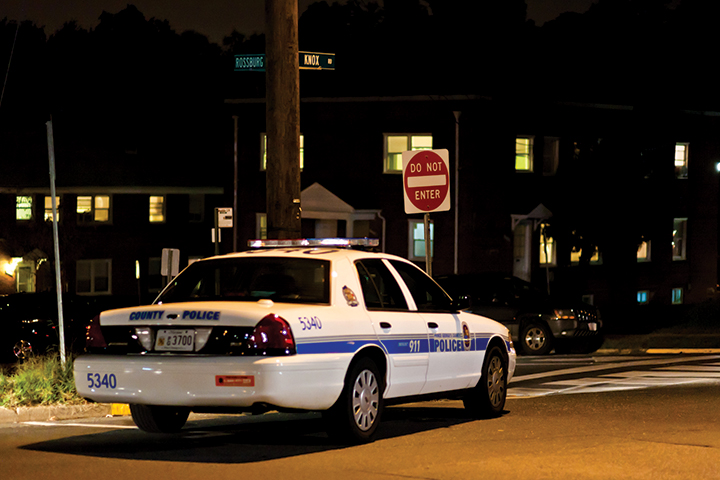Views expressed in opinion columns are the author’s own.
New research into police brutality has revealed that fatal police violence is the sixth-leading cause of death among 25 to 29-year-old men in every racial group. And inherent racism toward black males — who are 2.5 times more susceptible than their white counterparts to fatal police violence — has become even more evident.
Naturally, these statistics, alongside a villainous portrayal in the media, have led to an unfavorable view of police officers. Recently, a wooden flag with a single blue stripe that was gifted to the Montgomery County police station was banned by a county executive because it was deemed “divisive.” The inclusion of the blue line has been labeled by some as a slight against Black Lives Matter by apparently conveying the opposing message, Blue Lives Matter.
This is a bit of an overreaction. It’s ludicrous that a mundane artistic choice here is being labeled with a politically charged motive. Banning this flag implicitly criticizes support for the police and perpetuates the notion that law enforcement is undeserving of praise. Difficult as it may be, it’s vital to recognize that law enforcement personnel who abide by their duty do exist, and appreciation of law enforcement should not be socially taboo.
Part of the issue can be attributed to the media’s tendency to report negative news. While there is undeniably a large influx of incidents related to police brutality, not all interactions result in violent encounters. Through a mental process called the availability heuristic, people estimate the probability that an event will occur depending on how many instances readily come to mind. Given that much of the publicity surrounding law enforcement is negative, people subconsciously develop hostile sentiments toward police.
Less obvious acts of kindness police perform daily barely get any attention, such as donating food to the homeless or speaking with troubled citizens. Stories of police officers who have purchased a gym membership for a poor teen or have driven an applicant to a job interview after getting lost are minimally covered. However, these small acts of kindness matter and crucially demonstrate that police who go above and beyond do exist.
It’s also important to remember that police officers encounter frequently dangerous and unpredictable situations. Unsurprisingly, police officers have a higher fatality rate compared to the average American worker, even when jobs that are more dangerous typically involve hazardous machinery. Police officers can be injured even in the most unsuspecting situations, such as in what investigators called a routine traffic stop. The constant, subliminal fear of death is a real concern.
However, police culture dictates that weakness should never be shown. Due to pressure to develop a hard exterior, suicide among police officers is a pressing issue, and their mental health is often overlooked. In 2019 alone, 122 law enforcement officials have died by suicide nationwide.
Criticism of police officers is widely accepted – justifiably for the most part – but any appreciation of them is often given little attention and can even be considered taboo. While law enforcement agencies need to undergo some systemic changes, it’s detrimental to only focus on the negative aspects of this issue and not show appreciation for the officers who do their best to serve us.
Kevin Hu is a sophomore physiology and neurobiology major. He can be reached at kevxhu@gmail.com.



